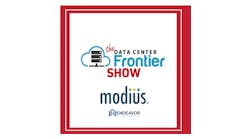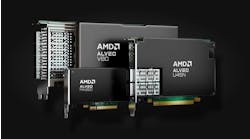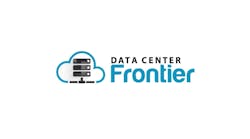Over the past five years, hyperscale computing has undergone a tremendous transformation that has firmly validated its position as the backbone of our digital world. According to a Synergy Research report, as of mid-2023, 19 global cloud and internet service companies collectively operated 926 data centers around the world, and Synergy forecasts an upcoming pipeline of 427 data facilities. In just a relatively short but hugely impactful timeframe, the hyperscale industry has experienced substantial growth and evolution, driven by cultural changes embracing streaming media, social networking and mobile apps.
Back in 2010, going down a YouTube rabbit hole, or binge watching the latest Netflix hit series, was not possible. The apps and sites we now rely on didn’t have the capacity or ability to do the things we now take for granted. That all changed thanks to hyperscale providers recognizing our shift, transforming hyperscale computing from a nice-to-have to a must-have. It’s become the lifeblood enabling our digital world and economy.
The COVID-19 pandemic further amplified this trend, flooding hyperscale data centers with Zoom calls, Netflix movie nights and Facebook scrolls when there was nowhere to go during the lockdown. According to a Qualtrics Research survey commissioned by Zoom, in April 2020, Zoom reached 300 million daily meeting participants, compared to December 2019 when they hit approximately 10 million daily participants.
The hyperscale data centers that support this burgeoning online life are marvels of cutting-edge engineering, containing acres of servers and networking gear powering our connected world. However, hyperscale computing is much more than discrete data centers – it forms an interconnected global infrastructure network enabling on-demand access to massive capacity. This distributed web-scale architecture allows users to tap into vast computing resources and services from anywhere in the world, exempt from geographic limitations.
At the heart of hyperscale computing are fiber optic cabling systems, which play a pivotal role in facilitating communication and ensuring seamless connectivity within and between these facilities. This nearly unlimited capacity is powered by hyperscalers interlinking data centers across regions through dense, high-speed fiber networks. Often, hundreds of miles of cable are woven throughout the data center, interconnecting servers to three or more layers of high-performance switches.
This internal high-speed network enables huge data loads to move seamlessly between servers and out to the internet. Supporting this connectivity is advanced data center interconnect (DCI) technology. DCI provides high-bandwidth, low-latency connections between geographically dispersed data centers, facilitating efficient workload and data sharing across locations.
A strong fiber optic backbone is also essential for bolstering artificial intelligence (AI) endeavors, another pivotal aspect of hyperscale expansion over the past five years. As AI adoption explodes, access to immense data sets is crucial for training complex models. Hyperscale providers have rapidly built out data centers tailored for AI workloads, fostering a symbiotic relationship that propels both sectors forward.
AI algorithms like deep learning neural networks require processing mind-boggling amounts of data during training. Hyperscale GPU-powered infrastructure has proven ideal for this computationally intensive task. The virtually unlimited capacity available on demand from cloud providers allows companies to develop AI models cost-effectively without massive upfront server investments. The hyperscale infrastructure supporting these AI leaps depends on a robust fiber optic infrastructure connecting vast networks of data centers and servers. Highspeed, low-latency fiber connectivity further enables the massive data flows that are required during model development and training.
Based on the tremendous growth hyperscale has experienced in just a few short years, the pace of expansion shows no signs of slowing down. The hyperscale landscape is crucial for businesses and technology leaders looking to prepare for the future, and such interconnectivity is imperative to realize the full benefits of distributed hyperscale architecture. The success of hyperscale providers like Amazon, Microsoft and Google relies on extensive fiber optic networks, facilitating data flows between data centers, ensuring resilience, and providing the ideal medium for transit. Fiber networks offer bandwidth, reliability, and security, allowing hyperscalers to meet future demands and integrate new technologies with agility.
For more information on the hyperscale landscape, its growth and evolution, read part two of our eBook series titled “Hyperscale Rising.”

Alan Keizer
Dr. Alan Keizer is Senior Technical Advisor for AFL. Alan earned a Ph.D. in Physics from Cornell University and has worked at the intersection of computers and networking for the past four decades. He has been an individual technologist, a business development leader and senior executive. Joining FibreFab in 2006, he was a key contributor to the business which was acquired by AFL Telecommunications in 2013 and became a key component of today’s AFL Hyperscale. Since 2010, his main focus has been development of optical fiber connectivity solutions for hyperscale computing.

Keith Sullivan
Keith Sullivan is the Director of Strategic Innovation for Hyperscale, AFL. With over 30 years of experience, Keith is an accomplished business leader in the fiber optics industry with a specialty in data centers. He started his career in 1995 in a factory in England producing specialty fiber assemblies for high-speed devices in the telecom industry. Since then, he has worked for industry-leading organizations in sales, marketing, product line management, and strategy.







